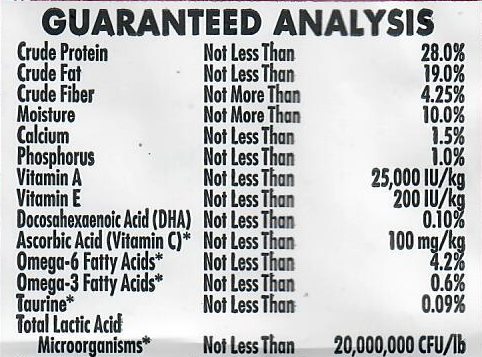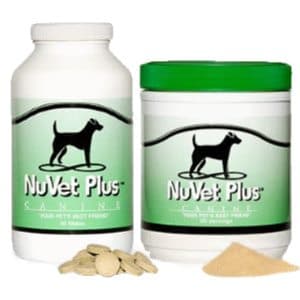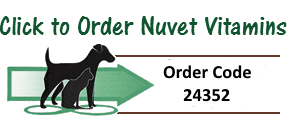Dog Food Labels: Your Guide to Becoming an Expert Reader
By Janice Jones | Updated 04-21-2023
Dog Food Labels could have been written in Greek in my opinion, as they are probably the most confusing type of package labels I've ever encountered?
If you are here right now, I'm wondering if you feel that way to?
Labeling is supposed to help us, as consumers make informed decisions for our furbabies, but the requirements placed on dog food manufactures are sometime vague at best and confusing at worst.
It shouldn't require a PhD in animal nutrition to choose a dog food, but it often feels that way. Yes?
As someone who truly cares about what goes into my dogs' mouths, I was encouraged to learn that 92% of dog owners do read ingredient lists when buying new foods. In fact, according to Luminer, who did an extensive study on Pet Food Nutrition Labels, of those pet parents that didn't read the label, the overwhelming majority of folks stated they didn't read it due to lack of information on the package.
There must be an answer for the average caring dog owner to get the information needed to choose a good food. If you are like me, we want to provide as high a quality of diet as we can afford, but without a clear understanding of what that "high quality diet" looks like, the tasks takes on monumental proportions.
After consulting with a few nutrition experts and scouring some of the current publications and research articles, I feel confident that I'm beginning to have some understanding that I can share with you.
In this article I will be examining and deciphering the dog food labels on commercial kibble and other dog food products with the goal of helping you understand what you are putting in your small dog's mouth each day.
Background Information on the Dog Food Industry
To truly understand how to read dog food labels, it's important to look at where that information originates.
U.S. Agencies that Regulate Pet Food
You may have seen on your dog food label a statement that reads, "complete and balanced" as determined by the Association of American Feed Control Officials (AAFCO). This private organization consists of government feed inspection officials advises the pet food industry in the U.S. But, they are but one agency.
The U.S. Food and Drug Administration/Center for Veterinary Medicine State Feed Control Officials (FDA) is responsible for regulating foods in interstate commerce which is basically any food sold in the U.S.
The U.S. Department of Agriculture (USDA) regulates imported pet foods, and has a voluntary inspection system for pet food manufacturers.
The Federal Trade Commission (FTC) Regulates print and electronic advertising of pet foods.
The National Research Council (NRC) is a private organization that advises government agencies on pet nutrition and publishes, "Nutrient Requirements of Dogs and Cats."
And, that is just in the US. Each country has its own agencies that are involved in the pet food industry.
Reading Dog Food Labels: The Main Parts to Examine
There are eight sections of a dog food label that are of interest to dog parents
- The Guaranteed Analysis
- The Nutritional Adequacy Statement or AAFCO Statement
- The Ingredients List
- The Product Name
- Feeding Guidelines
- Manufacturer's Information
- Net Weight
- Expiration Date
Dog Food Labels: The Guaranteed Analysis
Here are two examples of Guaranteed Analysis statements from two different dog food products.
Dog Food Product A

Dog Food Product B

The Guaranteed Analysis lists the minimum amounts of certain ingredients such as protein and fats and the maximum amounts of moisture and fiber. The protein and fat levels are listed on the label in an “as-is” basis which includes water. It does not tell you what the protein sources are or whether the protein is of animal or plant origin.
But this is where it gets tricky, if you want to evaluate two different foods. You can't just compare labels.
Each dog food can have a different level of moisture which would affect how much of the nutrient is in the food on a dry-weight basis. What this is really saying is that you can't be sure how much protein and fat is in a particular food until you do a simple calculation
The comparison requires a little math:
- Locate the % of the nutrient such as protein on the label
- Locate the % of moisture on the label
- Subtract the % of moisture from 100 to get the % of dry ingredient
- Divide the number from number 1 by the number in 3 and multiple by 100
Dog Food Product A
For this product, I subtract 10% moisture from 100% to 90%. I divide 26 Crude protein by 90 and then multiple by 100 to get 28.8 or 29% protein. I repeat for fat and fiber.
Protein: 29%
Fat: 18%
Fiber: 3%
Dog Food Product B
In this example, I subtract 10% (moisture) from 100% to get 90% dry. I divide 28 (Crude Protein amount) by 90 and multiple by 100 to get 31% protein on a dry basis. I then do that for fat and fiber.
Protein: 31%
Fat: 16%
Fiber: 4.7%
The AAFCO or American Association of Feed Control Officials sets the guidelines for the type and amount of nutrients dogs need. For adult dogs, foods should contain no less than 18% protein and for puppies the food should have a minimum of 22 percent protein. In the cases above, both foods meet the minimum requirements.
The Nutritional Adequacy Statement or AAFCO Statement

This statement shows the method of testing used to determine the nutritional adequacy of a pet food. It shows that the food provides complete and balanced nutrition for each specific life stage such as puppy, pregnant, adults, seniors, etc. that it is intended for.
Alternately, the statement might say that it is nutritionally adequate for all life stages. If you cannot find this statement, chances are that the food is not nutritionally complete.
Dog Food Labels: The Ingredient List

As is the case with human food, dog food manufactures are required to list the ingredients in descending order by amount on a dry weight basis and must list every ingredient. Again, this can be tricky and dog food manufactures have ways to get around this requirement, thus making their foods look better and more nutritious.
For example, if the main ingredient in a dog food was corn, the manufacturer could list the corn as corn flour, corn germ meal, corn bran and corn middlings. If chicken is also part of the food, the manufacturer can then list chicken or even chicken byproducts as the first ingredient.
Better quality foods will have at least two animal protein sources listed in the first few ingredients.To make matters more confusing, food manufactures have their own vocabulary.
Here are a few commonly used terms:
Animal byproduct meal
Any part of the rendered animal and in this case, it could be any kind of animal, that does not fit into another definition but it cannot contain hair, horns, hoofs, hide, manure or intestinal content.
Byproducts
Byproducts refer to any non-human grade protein obtained from the animal carcass. Use your imagination. Actually by-products are not necessarily all bad. Before we domesticated dogs they killed and ate the whole animal.
But in a high-quality dog food, the main protein source should be the real thing, not the stuff that gets thrown away when food is processed for human consumption.
Meat
This is a little easier to understand. It is the clean flesh of the slaughtered mammals such as cattle, swine, sheet or goat that comes from the muscle, tongue, diaphragm, heart or esophagus.
Meat Meal
This refers to the rendered meal made from animal tissues. It cannot contain blood, hair, hoofs, horns, hide trimmings, manure or intestinal content and cannot contain more than 14% indigestible materials. Meat meal may not sound terribly appetizing to humans but it can contain more minerals than meat.
Meat byproducts
This is the fresh, non-rendered clean parts of the slaughtered animal. There is no meat, but it does contain lungs, spleens, kidneys, brains, lovers, blood, bones, fat, stomachs and intestines. It cannot contain hair, horns, teeth, or hoofs
Meat and Bone Meal
This is similar to meat meal, but can also contain bone.Poultry or chicken or turkey byproduct meal: This is the ground, rendered clean parts of the carcass of poultry or if chicken is used exclusively it is made entirely of chicken. It can include necks, feet, undeveloped eggs and intestines. It cannot contain beaks or feathers.
Poultry, chicken or turkey byproducts:
This contains all non-rendered parts of the poultry, chicken or turkey but cannot contain feces or foreign matter.
Dog Food Labels: Product Names
Here are a few more definitions to help you understand the label. Some manufactures are using terms such as premium, super premium, ultra-premium, holistic or even gourmet.
There are no guidelines for using these labels and so consumers should know that these so called premium or gourmet foods are no different or have any higher quality of ingredients than any other brands of dog foods. This is simply a marketing ploy.
If a food says it is organic, it must be certified as organic by the USDA and produced and processed without chemical pesticides, synthetic fertilizers, hormones and antibiotics. If the food is natural, it is free of food coloring and chemical additives.
There is also what the AAFCO calls the 95% rule. At least 95% of the product must be the named ingredient, not counting water and “condiments.” If the product name lists one ingredient, such as chicken dog food, then 95% of the total weight of the food must be chicken. If there is a combination such as chicken and brown rice formula the combination of ingredients must equal 95% of the total weight.
Dog Food Labels: Feeding Guidelines
These guidelines tell the dog owner how much to feed based on their pet’s body weight.
One difference between a high quality and a low quality food is the digestibility of the food. This is the amount of the ingredients in the food that the animal can break down and absorb and actually use. The dog can use a more highly digestible food and so will need less of it to get the same nutritional value.
A diet of less digestible food requires that the animal eat more of it per day to assure they are getting the same nutrition. Sometimes you will discover that a higher priced food is actually cheaper in the long run because the dog requires less of it. And, lest I say, what goes in must come out, so higher priced food also tend to produce less feces for later clean up.
Dog Food Labels: Net Weight
The package should state the net weight and this requirement is strictly regulated by the U.S. Fair Packaging and Labeling Act. It tells you the weight of the product and is especially important towards helping you understand what you are paying for when comparing products.
Manufactures play plenty of tricks such as adding air to the product to fill a bigger bag with less dog food, so be sure to compare the net weight when comparing product pricing.
These weights can change over time, so it is important to know how much food you are actually buying. There seems to be a trend in recent years to purchase smaller and smaller bags of the foods.
Dog Food Labels: Manufacturer's Information
Pet food labels must include the manufacturer’s name and address and preferably a telephone number. Many nowadays also provide a website and even an email address.
Many products on the shelves are not actually made by the brand or company selling the product. The "manufactured by..." statement on the dog food label will let you know who is actually making the food and who you should be researching.
If you live in the United States of America, you should be purchasing food manufactured in the USA. Furthermore, the ingredients that go into your dog food should also be produced in the USA. You may also want to avoid manufacturers involved in any recall of dog food.
Dog Food Labels: Expiration Date
Finally, it is always a good idea to look at the expiration date. Most dry foods have expiration dates approximately one year after the food is manufactured.
The date does not tell you if the ingredients were stored improperly before being manufactured into a dog food.
Even after manufactured, the nutritional content may not be at its premium if stored in warm, humid environment.
The date does tell you when it was manufactured and then you be the judge.
"Hi, I'm Janice Jones, a former veterinary technician and Shih Tzu expert with over 40 years of experience with the breed. Through Miracle Shih Tzu, I combine my medical background and extensive breed knowledge to provide reliable, practical advice for Shih Tzu owners. My mission is to help you give your Shih Tzu the happiest, healthiest life possible through evidence-based information and real-world solutions. Whether you're new to the breed or a seasoned owner, you'll find trusted guidance here for all aspects of Shih Tzu care.
I hold an undergraduate degree in Psychology with a minor in biology, Early Childhood Education, and Nursing, and a Master's in Mental Health Counseling.



